technological solutionism
description: the belief that all problems can be solved through technology
32 results
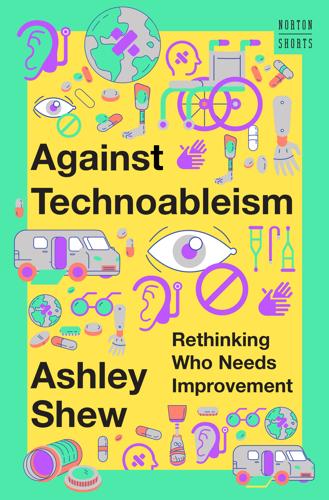
Against Technoableism: Rethinking Who Needs Improvement
by
Ashley Shew
Published 18 Sep 2023
What is bad is living in a world that tells you that you are wrong for existing. Many of us want futures where disabled people don’t have to be pushed to normalize our mere-difference in order to make ourselves palatable enough—“includeable,” to use sociologist Tanya Titchkosky’s term. But in the current climate of technological solutionism, where my university hosts talks on “The End of Disability” and Herr brings his brand (he does want to sell you his ankles) of technological relief to MIT, disability is painted only as tragedy and is used as a backdrop for stories of tech-driven intervention and subsequent redemption. Narratives about disability technology, in all sorts of media, do not serve the people the stories are ostensibly about.
…
Bell (1927), 20 Çevik, Kerima, 104 Carter-Long, Lawrence, 27, 28 “Case for Conserving Disability” (Garland-Thomson), 52 Case for Disabled Astronauts, The (Wells-Jensen), 126 cerebral palsy, 91 chapter guide, 12–13 charity marketing campaigns, 36–37 Charles, Ray, 35 chattel slavery, 24 chemobrain, 11–12, 77, 78, 112 Chertock, Marlena, 126 “Choreography for One, Two, and Three Legs” (Sobchack), 138n15 citizenship, 18, 137n6 Claiming Crip (Hitselburger), 30 Clare, Eli, 124 climate change, 115–16, 117 “Clinically Significant Disturbance: On Theorists Who Theorize Theory of Mind” (Yergeau), 140n28 cochlear implants, 71–72 colonization effects, 24–25 concentration camps, 91 congenital amputees, 57 congenital disability, 89 Covid-19, 41, 52, 58, 115, 118, 138n13, 141n38 “crip,” 30 Crip Camp, 30 Crohn’s disease, 4 cross-disability community connections, 12, 77, 78–81, 85–86, 131 cultural technologies, 83, 107–8 Cyborg Jillian Weise, The, 2, 9–10 cyborgs (technologized disabled people), 55 Dancing with the Stars, 49, 60, 61, 63, 64 Deaf community, 71–72, 73 Deaf Gain, 73–74 Deaf Poets Society, The, 125–26 Decolonizing Mars Unconference, 117, 127–28 dehumanization, 88–89, 100, 101–2, 140n28 de Leve, Sam, 126, 130 “Descent” (Kinetic Light Project), 62–63 diabetes, 59, 138nn12–13 Diagnostic and Statistical Manual (DSM), 19, 102 disability conscious acts of empowerment, 28–30 economic categorization of, 24–25 historical framework of, 24–25, 26–27 pathologized approach vs. experiential/relational approach to, 85–86 political/relational contexts within, 88 as predictable human experience, 114–15 as social construct, 21 uncertainty and, 120–24 disability activism, 12, 79 campus accessibility campaigns, 138n7 celebrating disability embodiment and, 62–63 centering disabled people in disabled technology, 17, 110–11 charities garnering activist critique, 92 cross-community coalitions and, 79–80 disability rights, 44, 92, 105 disability rights movement, 27, 28, 31, 56, 92, 109 disability communities amputee community, 3, 12–13, 14–15, 26, 58, 59, 74–75 autistic community, 77, 79–80, 105–6, 112 claiming identity, 28–29 Deaf community, 71–72, 73 framing language of, 25–26, 30, 31 inclusion/diversity of, 22, 82, 115, 124 media generated tropes and, 40, 41–43 nondisabled experts harm to, 10–11, 19–20, 88 principles of justice, 125 representation and, 4, 56, 119 value of, 51, 56, 113, 122, 124, 125 See also neurodivergence disability culture, 107–8 disability experts, 2–3, 10–11, 17, 19–20, 50–51, 100, 123, 131 disability history, 24–25, 26–27, 31, 88–92 Disability History of the United States, A (Nielsen), 23 disability language, 11, 23, 25–26, 30, 31, 72 disability parking, 5–6, 38–39, 78 disability service professionals, 85–86, 95–96 disability and technology centering disabled as experts, 17, 110–11 cultural technologies, 83, 107–8 deterioration and usage, 60 disorientation and, 22–33, 44–45 historical Nazi Germany and, 89–92 insight for technological futures, 123–24, 128–30 media narratives and, 17, 32–33, 35, 50–51, 59, 60–61 medical model of disability and, 71 technoableism, defined, 7–8, 9, 130 technofuturists and, 114, 118–19 technological solutionism and, 4, 8, 9–10, 32, 51–53, 71–72, 74 See also accessible environments Disability Visibility Project, 114 disability welfare, 34, 38 disabled, etymology, 27–28 disabled ecologies, 116 Disposable Humanity (Snyder and Mitchell), 92 Divas with Disabilities Project, 56 Down syndrome, 91 Down Syndrome Uprising, 94 drapetomania, 25 DSM (Diagnostic and Statistical Manual), 19, 102 Dungeons & Dragons, 80, 107, 109 Ehlers-Danlos Syndrome (EDS), 85 emotional regulation, 97 enhancement technologies, 51 environmental health hazards, 116–17 environmental racism, 115–16 eugenics history, 89–92 euthanasia, 91 Evans, Dom, 35 exoskeletons, 8, 22, 50, 55 eye contact, 83, 84, 86, 99, 103 Fakorede, Foluso, 58 fatphobia, 17 feel-good narratives, 53–54 Feminine Boy Project, 102 Film-Dis, 35 flappy hands, 96–97 Forber-Pratt, Anjali, 28 forced sterilization, 88, 91 Funk, Cynthia, 56 Fuselier, Annabelle, 112 Gallaudet Eleven, 127, 130 Gardiner, Finn, 97, 106–9 Garland-Thomson, Rosemarie, 28, 52, 68 gay conversion therapy, 102, 103 gender dysphoria, 102 handicapped, 26–27 Hawking, Stephen, 128 Hearing Happiness (Virdi), 71, 73 Heidinger, Willi, 90 Herr, Hugh, 51, 53, 56, 67 Hershey, Laura, 124 Hitler, Adolf, 89, 90 Hitselburger, Karin, 30 Holocaust, 89 Hough, Derek, 61 “I Am Autism” (Wright), 92–93 IDEA (Individuals with Disability Education Act), 26 identity-first language, 25–26 Indian Residential Schools, 24 Indigenous peoples, 23, 24, 25 Individuals with Disability Education Act (IDEA), 26 inspirational-overcomers trope, 41–44, 46–47, 49, 54–55, 60–64, 71–72 inspiration porn, 41–44 institutionalization, 88 intellectual disabilities, 29, 95 Invitation to Dance (Linton), 62, 138n10 James, William, 139n16 Jerry’s Kids, 37 Johnson, Cyrée Jarelle, 124 Johnson, Harriet McBryde, 31, 37 Jones, Keith, 30 Judge Rotenberg Center (JRC), 104–5 Kennedy, John F., 139n23 Kennedy, Rosemary, 139n23 Krip Hop Nation, 30 Lamm, Nomy, 124 Law, Ashtyn, 35 Left Hand of Darkness, The (LeGuin), 120–21 leg amputees, 16, 49, 64–67, 69–70 LeGuin, Ursula K., 120, 121 Leib-Neri, Marisa, 23–24 Lewis, Jerry, 37 Lewis, Talila A., 9 Linton, Simi, 27, 62, 138n10 Little People of America, 94 Long Covid, 41, 52, 115, 118 Lovaas, Ivar, 100–102 Lumumba-Kasongo, Enongo 128 Lyme disease, 119 MacIntyre, Alasdair, 119 Magic Wand, The (Manning), 34 Manning, Lynn, 34–35 McCollins, André, 104–5 McCollins, Cheryl, 104 McLain, Elizabeth, 106–7, 111–12 McLeod, Lateef, 124 media narratives, 17, 32–33, 35, 50–51, 59, 60–61 See also tropes medical experimentation, 91 medical model of disability, 20–21, 31, 71, 139n22 mental illness, 25, 88, 102, 130 Meyer, Bertolt, 55 Milbern, Stacey, 124 Mitchell, David, 92 mobility equipment, 17, 22, 48, 55, 69, 131, 137n5 moochers-and-fakers trope, 38–39, 88–89 Moore, Leroy Jr., 30, 124 movement choices, 16, 62–63 Muscular Dystrophy Association telethons, 37, 92 Nario-Redmond, Michelle, 137n3 National Council on Independent Living, 94 National Institutes of Mental Health, 102 Native American cultures, 23, 24, 25 Nazi Germany, 89–92 Nelson, Mallory Kay, 14, 16, 137n5 neurodivergence addressing social structures, 86–87, 88 applied behavioral analysis and, 95–101, 103–5 Autism Speaks and, 37, 92–93, 94, 95 autistic community and, 77, 79–80, 105–6, 112 autistic scholars panel, 106–12 cross-disability community connections, 12, 77, 78–81, 85–86, 131 cultural technologies and, 83, 107–8 dehumanization and, 88–89, 100, 101–2, 140n28 disability service professionals and, 85–86, 95–96 historical Nazi Germany, 89–92 language of, 84–85 neurodiversity and, 12, 13, 80, 81, 82, 84 neuroqueer, 102 neurotypical and, 81–82, 83 stimming and, 96–97 See also autism spectrum disorder; disability communities neurodiversity, 12, 13, 80, 81, 82, 84 neurodiversity movement, 13, 82 neurodiversity paradigm.
…
See autism spectrum disorder Staring (Garland-Thomson), 68 stereotypes, 4, 27, 34, 35, 36, 55, 111 Stevens, Bethany, 137n5 Steward, Robyn, 106 stimming, 96–97 Sutton, Michelle, 10–11, 19, 106 T4 program, 91 TAB (temporarily able-bodied), 23 Tales from the Crip (Tischer), 30 Taylor, Sunaura, 116 technoableism, defined, 7–8, 9, 130 technofuturists, 114, 118–19 technological solutionism, 4, 8, 9–10, 32, 51–53, 71–72, 74 technologized disabled people (cyborgs), 55 technology. See disability and technology techno-optimism, 60 temporarily able-bodied (TAB), 23 Theory of Mind research, 140n28 Thinking Person’s Guide to Autism, A (Gardiner), 97 Thompson, Vilissa, 42 3-D printers, 68 Till, Emmett, 104 Till, Mamie, 104 Tischer, Ingrid, 30 Titchkosky, Tanya, 53 Too Late to Die Young (Johnson), 37 tropes bitter cripple, 39–40 definition of, 35–36 inspirational-overcomers, 41–44, 46–47, 49, 54–55, 60–64, 71–72 moochers-and-fakers, 38–39, 88–89 pitiable-freaks, 36–37, 88–89 shameful sinners, 40–41 True Biz (Nović), 71, 72 Ugly Laws, 18 United Nations, 104 universal design, 8, 87, 88 Unstrange Mind (Sparrow), 98 U.S. immigration policies, 17–18 vascular disease, 59 Virdi, Jai, 71, 73 Walker, Nick, 81, 84, 102 Walkowicz, Lucianne, 127 Walton, Donna R., 56 War Against the Weak (Black), 89, 90 war heroes, 57, 59 Weise, The Cyborg Jillian, 2, 9–10 Wells-Jensen, Sheri, 18, 126, 128, 130 We Love Like Barnacles: Crip Lives in Climate Chaos (2021), 125 wheelchair icon, 21–22 white privilege, 42 white supremacy, 17 Williams, Damien P., 107 Williams, Rua, 106, 110–11 Wonder, Stevie, 35 Wong, Alice, 30, 125–26 Wright, Bob, 92 Wright, Suzanne, 92 xenophobia, 17 Yergeau, Remi, 140n28 Young, Stella, 43 Norton Shorts BRILLIANCE WITH BREVITY W.

Road to Nowhere: What Silicon Valley Gets Wrong About the Future of Transportation
by
Paris Marx
Published 4 Jul 2022
That continues to be a problem in the present day, with a tech industry that continually fails to diversify and where the women and people of color who do reach higher positions often do not challenge the entrenched worldview that benefits wealthy executives of any background. Tech critic Evgeny Morozov argued that the approach of these powerful figures creates a quest for technofixes that do not address the real problems we face. He called this “technological solutionism” and defined it as “an unhealthy preoccupation with sexy, monumental, and narrow-minded solutions—the kind of stuff that wows audiences at TED Conferences—to problems that are extremely complex, fluid, and contentious.”34 Part of the problem is that the executives, venture capitalists, and other important figures associated with the tech industry do not take the time to understand the real problems they claim to seek to solve, and instead make assumptions about serious issues and their root causes to legitimize preconceived technological solutions.
…
Light, “Developing the Virtual Landscape,” Environment and Planning D: Society and Space 14:2, 1996, p. 127. 31 Ibid., pp. 127–9. 32 Benjamin Peters, “A Network Is Not a Network,” in Your Computer Is on Fire, MIT Press, 2020, p. 87. 33 Ibid., p. 85. 34 Evgeny Morozov, To Save Everything, Click Here: The Folly of Technological Solutionism, PublicAffairs, 2013, p. 6. 35 Ibid., p. 5. 36 Jarrett Walker, “The Dangers of Elite Projection,” Human Transit (blog), July 31, 2017, Humantransit.org. 37 Adrian Daub, What Tech Calls Thinking: An Inquiry into the Intellectual Bedrock of Silicon Valley, FSG Originals, 2020, p. 36. 38 Luis F.
…
See bicycles Seattle, WA, ride-hailing services in, 99 Securities and Exchange Commission (SEC), 138 Sedran, Thomas, 129–30 self-checkout, 194–5 self-driving cars accidents with, 132–5 Autonomous Land Vehicle project, 119 Brin on, 114–5 challenges of, 126, 129–30 environmental dilemmas and, 131–2 Google, 6 Intermodal Surface Transportation Efficiency Act (1991), 119 Kalanick on, 116 Navlab autonomous vehicles, 119–20 Ng on, 126 pedestrians and, 127 pricing of, 127–8 pulp science fiction and, 118 Radio Corporation of America (RCA) and, 118 software for, 122–3 speed and, 123–4 Tesla’s Autopilot system, 137–8 Tsukuba Mechanical, 119 VaMoRs, 119 Sepulveda Pass, 141 Shanghai Gigafactory (Tesla), 83 Sheffield, UK, docked bikeshare system in, 170–1 Sheller, Mimi, 158, 207 Shell Oil City of Tomorrow, 2 Shill, Gregory, 30 shipping industry, 49 shut-in economy, 196–7 Sidewalk Labs, 228–30 Silicon Valley, 37–8, 44–5 skates (platforms), 146–7 Skyports, 154–5 Small Business Investment Company, 55 smart homes, 60–1 smartphone apps, 55, 181, 194–5 Smiley, Lauren, 196 Social Bicycles (SoBi), 167–8 Socialist Left Party, 209 social media, 61–2 SolarCity, 55, 143, 188 solar panels, Musk on, 188–9 Southern State Parkway, 26 Soviet Union, 39 space program, 48 SpaceX, 55, 144, 148, 150–1 speed limiter referendum, 19–20 speed limits, 18–20 Sputnik I satellite, 39, 45 standardized containers, increasing use of, 49 Standard Oil of California, 21 Stanford Industrial Park, 40 Stanford Research Institute, 54–5 Stanford University, 39–40, 55, 120 Stark, Tony, 70 Starley, John Kemp, 160, 162 Starship Technologies, 172, 173–5, 176–7 Stop de Kindermoord, 205 streetcars, 12–3, 15, 21, 92, 160 “subscriber city,” 197 suburbanization, 23 suburbs, 12–3 superhighway plan (Detroit), 22 supply chains, 50 Surface Transportation Policy Project, 141 surge pricing, for ride-hailing services, 100 Swisher, Kara, 116–7 Taft-Hartley (1947), 112 taxi medallions, 104–5 taxi services about, 95–6, 101–2, 104–5 industry regulation and, 107, 110–1, 185 Taylor, Isaac, 122 TCP/IP protocol, 50 TechGirls Canada, 228–9 tech industry development of, 9–10 growth of, 4, 180–5 speed of technological innovation, 48 technological solutionism, 59 Tesla, 5–6, 55, 63–4, 70, 72, 73, 82–4, 85–6, 116, 137–8, 143, 147, 158–9, 188, 189, 190 Tesla, Nikola, 70 Texas, Interstate Highway System in, 140 Thacker Pass, NV, 79, 226 Thiel, Peter, 46–7 Thrun, Sebastian, 121 Toronto, Canada, 228–30 Toyota, 116, 121, 122 train system in France, 220 in North America, 218–9 transportation bus system, 21, 215, 219 computerized planning systems for, 130 flying cars, 151–2, 159 history of, 7 jitneys, 89–91, 92, 108–9 Navlab autonomous vehicles, 119–20 present-day dominance of, 34–5 taxi services, 95–6, 101–2, 104–5, 107, 110–1, 185 three-dimensional vs. two-dimensional, 145 train system, 218–9, 220 tunnels for, 144–51, 154–5, 158–9, 189 vertical takeoff and landing vehicle (VTOL/eVTOL), 152–5, 157, 158 walking as primary means of, 12 Trudeau, Justin, 79–80, 228 Trump, Donald, 78 Tsukuba Mechanical, 119 tunnels, for transportation, 144–51, 154–5, 158–9, 189 Turner, Fred, 41, 43, 52 Turner, Matthew, 141–2 Uber about, 115 acquisition of Jump, 166–8 Advanced Technologies Group (ATG), 133, 134–5 benefits of, 94 campaigns for, 103 changed from Ford Fusion to Volvo XC90 SUVs, 134–5 compared with taxi services, 95–6 core business of, 93 costs for, 107–8 Covid-19 and, 108 customer base for, 100–1 divisions of, 153–4, 184 driver pay for, 103–4, 107 effect on traffic of, 100 employee classification for, 111–2 founding of, 181 Greyball and, 110 growth of, 97, 105–6 industry regulation and, 101–2, 107, 110–1, 112–3, 156, 174, 185 loss of money by, 106–7, 184–5 marketing by, 158–9 media representation of, 94–5 micromobility services of, 166–9 model of, 102–3 in New York City, 98–9 origins of, 92–3, 109 pricing for, 184 promises made by, 186 pulls out of China, 152 refocus on ride-hailing and food delivery services, 184–5 safety record of, 134, 135–6 in San Francisco, 97–8 walking vs., 191 Uber Air, 153–4, 155, 157, 159 Uber Copter, 155–6 Uber Eats, 184–5 Uber Elevate, 152, 154, 159 unemployment rate, 95–6 unions, for taxi drivers, 101–2 United Kingdom (UK) docked bikeshare system in, 170–1 ecommerce in, 193 University of Technology Sydney, 75 University Paris-East, 169–70 Unsafe at Any Speed (Nader), 27–8 Untokening collective, 218 Urban Challenge, 120 urban renewal strategy, 26 Urry, John, 32–3, 143 US Air Force, 50 US Department of Defense, 50 US-Japan Semiconductor Trade Agreement (1986), 45 US National Labor Relations Act, 102 VaMoRs, 119 Vansintjan, Aaron, 222 Vasquez, Rafaela, 132, 135 Vélib’ bikeshare system, 210 venture capitalists, 186–7, 199 vertical takeoff and landing vehicle (VTOL/eVTOL), 152–5, 157, 158 Very Far Away from Anywhere Else (Le Guin), 202 Vietnam War, 39, 40, 43, 49 VoiceOver, 175 Volkswagen, 77, 78, 129–30 Volocopter, 152 Volvo XC90 SUVs, 134–5 Walker, Jarrett, 59, 142–3, 181–2 walking, as means of transportation, 12, 191 Washington, DC, ride-hailing services in, 99 Waterfront Toronto, 228–9, 230, 231 Waymo, 133, 138, 186 web 2.0, 57 WeWork, 181, 182–3 white people, mortgages and, 29 Who Killed the Electric Car?
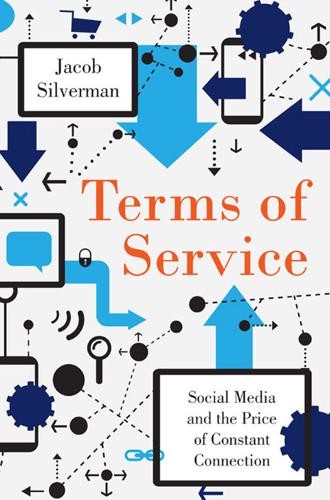
Terms of Service: Social Media and the Price of Constant Connection
by
Jacob Silverman
Published 17 Mar 2015
Unabashed cyber-libertarianism, combined with an avaricious and wholly unconflicted brand of consumerism, permeates America’s digital elite. Evgeny Morozov, a fierce critic of the industry, highlighted two important strains of belief in his recent books: the congenital utopianism of Silicon Valley moguls and their attendant faith in technological solutionism. Political strife, social injustice, economy inequality, the thorny challenges of human behavior and even the randomness of life—all might fall away when presented with a sophisticated technological fix. Cyber-libertarians believe that digital communication inherently favors oppressed parties, particularly in authoritarian countries, despite widespread evidence that countries from Bahrain to China to the United States are quite adept at surveilling, policing, and propagandizing their populations using the latest digital technologies.
…
In an inspired piece, F.A.T. harnessed the iconography and philosophy of TED (“Ideas Worth Spreading”) to cleverly subvert that organization. Led by artist Evan Roth, the group created realistic but fake TED stages—the black curtain fronted by a large screen, the imposing red TED letters the size of a small child, a sturdy reminder of the brand bringing you these life-changing promises of technological solutionism. Their fake TED speakers wore Secret Service–style earpieces, and some adopted the look of the maverick techie: hoodie, dark jeans, I’m-about-to-blow-your-mind hand gestures. A few of the speakers appeared deliberately ridiculous; one gustily flicked off the camera, another grabbed his own crotch.
…
March 25, 2013. 84 “most trends in Sina Weibo”: Louis Yu, Sitaram Asur, and Bernardo A. Huberman. “Dynamics of Trends and Attention in Chinese Social Media.” Social Science Research Network. Dec. 2, 2013. papers.ssrn.com/sol3/papers.cfm?abstract_id=2362561. 84 “when one greedy industry”: Evgeny Morozov. To Save Everything, Click Here: The Folly of Technological Solutionism. New York: Public Affairs, 2013, 157. 85 YTView menu: Chase Hoffberger. “I Bought Myself 60,000 YouTube Views for Christmas.” Daily Dot. Jan. 3, 2013. dailydot.com/entertainment/how-to-buy-youtube-views. 85 Revenue: ibid. 87 2013 Twitter statistics: Karen Wickre. “Celebrating #Twitter7.”
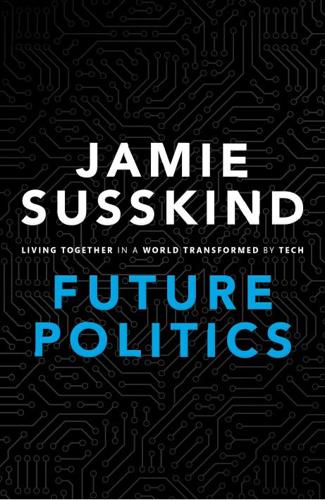
Future Politics: Living Together in a World Transformed by Tech
by
Jamie Susskind
Published 3 Sep 2018
OUP CORRECTED PROOF – FINAL, 30/05/18, SPi РЕЛИЗ ПОДГОТОВИЛА ГРУППА "What's News" VK.COM/WSNWS Notes 369 27. E. M. Forster, The Machine Stops (London: Penguin, 2011). 28. Evgeny Morozov, The Net Delusion: How Not to Liberate the World (London: Penguin, 2011), xiii. 29. Ibid. 30. Evgeny Morozov, To Save Everything, Click Here:Technology, Solutionism, and the Urge to Fix Problems That Don’t Exist (London: Penguin, 2014), 5. 31. See generally Andrew J. Beniger, Control Revolution: Technological and Economic Origins of the Information Society (Cambridge, Mass: Harvard University Press, 1986). 32. James Farr,‘Understanding Conceptual Change Politically’, in Political Innovation, 25. 33.
…
Julie Simon et al.,‘Digital Democracy:The Tools Transforming Political Engagement’, Nesta, February 2017 <http://www.nesta.org.uk/sites/ default/files/digital_democracy.pdf> (accessed 1 December 2017). 22. Full Fact <https://fullfact.org/> (accessed 1 December 2017). 23. Evgeny Morozov, To Save Everything Click Here:Technology, Solutionism, and the Urge to Fix Problems that Don’t Exist (London: Penguin, 2014), 119; Andy Greenberg, ‘Now Anyone Can Deploy Google’s Troll-Fighting AI’, Wired, 23 February 2017 <https://www.wired. com/2017/02/googles-troll-fighting-ai-now-belongs-world/? mbid=social_twitter> (accessed 1 December 2017). 24.
…
Chichester: John Wiley & Sons, Inc, 2013. Morozov, Evgeny. The Net Delusion: How Not to Liberate the World. London: Penguin, 2011. Morozov, Evgeny. ‘The Meme Hustler’. Baffler 22, Apr. 2013 <http:// thebaffler.com/salvos/the-meme-hustler> (accessed 30 Nov. 2017). Morozov, Evgeny. To Save Everything, Click Here:Technology, Solutionism, and the Urge to Fix Problems That Don’t Exist. London: Penguin, 2014. Morozov, Evgeny. ‘To Tackle Google’s Power, Regulators Have to Go After its Ownership of Data’. The Guardian, 2 Jul. 2017. <https://www. theguardian.com/technology/2017/jul/01/google-european-commissionfine-search-engines?
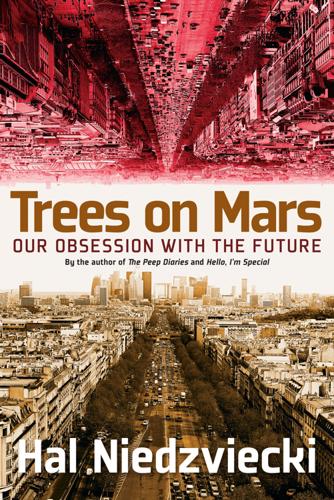
Trees on Mars: Our Obsession With the Future
by
Hal Niedzviecki
Published 15 Mar 2015
Ariana Eunjung Cha, “‘Big Data’ from Social Media, Elsewhere Online Redefines Trend-Watching,” The Washington Post, June 7, 2012, sec. Business, http://www.washingtonpost.com/business/economy/big-data-from-social-media-elsewhere-online-take-trend-watching-to-new-level/2012/06/06/gJQArWWpJV_story_2.html. 16. Evgeny Morozov, To Save Everything, Click Here: The Folly of Technological Solutionism (PublicAffairs, 2013), 7. 17. Mayer-Scho¨nberger and Cukier, Big Data, 135. 18. Will Knight, “Why Is Google Buying So Many Robot Startups?,” MIT Technology Review, December 4, 2013, http://www.technologyreview.com/view/522251/why-is-google-buying-so-many-robot-startups/. 19. Adam Fisher, “Google’s Road Map to Global Domination,” The New York Times, December 11, 2013, sec.
…
Cambridge, Mass: MIT Press, 1994. McLuhan, Marshall, Eric McLuhan, and Frank Zingrone. Essential McLuhan. 1st ed. New York, NY: Basic Books, 1995. Moretti, Enrico. The New Geography of Jobs. Boston: Houghton Mifflin Harcourt, 2012. Morozov, Evgeny. To Save Everything, Click Here: The Folly of Technological Solutionism. Public Affairs, 2013. Niedzviecki, Hal. The Peep Diaries: How We’re Learning to Love Watching Ourselves and Our Neighbors. San Francisco, CA: City Lights Books, 2009. ———. We Want Some Too: Underground Desire and the Reinvention of Mass Culture. Toronto, Ont. : New York, N.Y: Penguin Books ; Penguin Putnam, 2000.

Reset
by
Ronald J. Deibert
Published 14 Aug 2020
Retrieved from https://www.michaelgeist.ca/2020/03/how-canada-should-ensure-cellphone-tracking-to-counter-the-spread-of-coronavirus-does-not-become-the-new-normal/; The turn to apps to solve contact tracing challenges during the COVID pandemic is a good example of what Evgeny Morozov calls “technological solutionism.” See Morozov, E. (2013). To save everything, click here: The folly of technological solutionism. PublicAffairs. “It is insufficient to say that a comprehensive system for control and use of targeted surveillance technologies is broken”: United Nations Office of the High Commissioner for Human Rights. (2019, May 28). Surveillance and human rights: Report of the Special Rapporteur on the Promotion and Protection of the Right to Freedom of Opinion and Expression.

New Laws of Robotics: Defending Human Expertise in the Age of AI
by
Frank Pasquale
Published 14 May 2020
The United States demurred, and to this day it has not signed the anti-landmine weapons convention.54 At the time of negotiations, both US and UK negotiators insisted that the real solution to the landmine problem was to assure that future mines would all automatically shut off after some fixed period of time—or had some remote control capabilities.55 A device that could “phone home” could be switched off remotely once hostilities ceased.56 It could, of course, be switched back on again, too. America’s technological solutionism did not appeal to many participants at the mine talks. Dozens of countries signed on to the Ottawa Accord by 1998.57 More countries joined each year from 1998 to 2010, including major powers like China.58 United States diplomats tended to defer to its military authorities on this issue. These military authorities, in turn, are notoriously skeptical of international arms control agreements.
…
Fisher Price, “Think & Learn Code-a-pillar,” https://www.fisher-price.com/en-us/product/think-learn-code-a-pillar-twist-gfp25; KinderLab Robotics, “Kibo,” http://kinderlabrobotics.com/kibo/; Nathan Olivares-Giles, “Toys That Teach the Basics of Coding,” Wall Street Journal, August 20, 2015, https://www.wsj.com/articles/toys-that-teach-the-basics-of-coding-1440093255. 63. Darling, “Extending Legal Protection to Social Robots.” 64. A. Michael Froomkin and P. Zak Colangelo, “Self-Defense against Robots and Drones,” Connecticut Law Review 48 (2015): 1–70. 65. Evgeny Morozov, To Save Everything, Click Here: The Folly of Technological Solutionism (New York: Public Affairs, 2013). 66. Sherry Turkle, “A Nascent Robotics Culture: New Complicities for Companionship,” in Annual Editions: Computers in Society 10 / 11, ed. Paul De Palma, 16th ed. (New York: McGraw-Hill, 2010), chapter 37. 67. Margot Kaminski, “Robots in the Home: What Will We Have Agreed to?
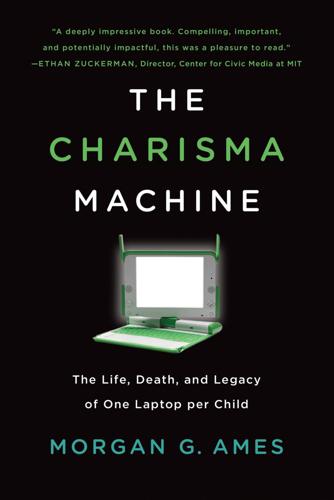
The Charisma Machine: The Life, Death, and Legacy of One Laptop Per Child
by
Morgan G. Ames
Published 19 Nov 2019
This is also one of the places where the seams between charisma and the world are most visible, as a charismatic technology’s acolytes maintain their devotion even in the face of contradictions.44 In their promises of action, however, charismatic technologies are deceptive: they make both technological adoption and social change appear straightforward instead of as a difficult process fraught with choices and politics. This gives charismatic technologies a spirit of technological determinism (or “technological solutionism”), whereby progress that a technology is supposed to cause is framed as natural and inevitable, thus overriding individual, social, institutional, or other kinds of agency—much like the “exceptionalism” of Weber’s charismatic leaders.45 Scholars in STS have been studying technological determinism for decades now and have sussed out the many ways it is wrong.46 But outside of those circles—and particularly in the technology development and design world—the belief is still commonplace.
…
Indeed, other accounts already persuasively make similar cases, including Kentaro Toyama’s account of “tech solutionism,” which critiques the ways in which technology writ broadly is framed as a solution to every problem, and Christo Sims’s description of “disruptive fixation,” where educational reformers become “fixated” on the promises of technology-driven disruption.57 These accounts debunk technology-centered hype and can help us understand some aspects of OLPC’s story, but this book will also examine what makes a “wrong” charismatic technology continue to be ideologically resonant among some true believers and why specific ideas seem to recur in one charismatic technology after another. Charisma is not inherently good or bad; rather, it is present when a technology’s promises outstrip its actual capabilities and capture the social imagination. Whereas a fixation on technology-driven disruption and a strong sense of technological solutionism both play a role in the story of OLPC, charisma provides a way both to unify the various mechanisms for social influence that OLPC tried to harness and to trace their interactions across the world. Although One Laptop per Child itself may no longer be widely charismatic, some of the ideas that animated the project still are, and they continue to reappear in new projects.

Geek Heresy: Rescuing Social Change From the Cult of Technology
by
Kentaro Toyama
Published 25 May 2015
To various degrees, it aligns with Aristotle and Confucius and their intellectual descendants,4 with advocates for health systems in public health, with the social worker’s idea of social development, with Easterly’s problem-solving systems in international development, with Evgeny Morozov’s polemic against technological solutionism, with Diane Ravitch and David L. Kirp’s critique of quick-fix approaches to American education, with 1980s communitarianism and its interweaving of public and private values, with the “institutional turn” in a range of social sciences, and with the thinking behind any number of feet-on-the-ground organizations that work primarily to foster people, organizations, communities, and nations.5 I hope to have persuaded you that they’re all united by a single theme.
…
CGAP Brief, Aug. 2009, https://www.cgap.org/sites/default/files/CGAP-Brief-Poor-People-Using-Mobile-Financial-Services-Observations-on-Customer-Usage-and-Impact-from-M-PESA-Aug-2009.pdf. Morozov, Evgeny. (2011). The Net Delusion: The Dark Side of Internet Freedom. PublicAffairs. ———. (2013). To Save Everything Click Here: The Folly of Technological Solutionism. PublicAffairs. Mueller, Claudia M., and Carol S. Dweck. (1998). Praise for intelligence can undermine children’s motivation and performance. Journal of Personality and Social Psychology 75:33–52, http://psycnet.apa.org/doi/10.1037/0022-3514.75.1.33. Mukul, Akshaya. (2006). HRD rubbishes MIT’s laptop scheme for kids.

Blockchain Chicken Farm: And Other Stories of Tech in China's Countryside
by
Xiaowei Wang
Published 12 Oct 2020
And really, the numbers don’t mean much in themselves, except as markers of both how policing has replaced social welfare services and the corporate-style expectations of efficiency that are put on police officers. Xiaoli’s predictive policing reflects the circular logic that has become embedded across many cultures, enabled by technological solutionism. As the scholar-activist Ruha Benjamin puts it, “Crime prediction is better understood as crime production.”5 The intractability of life to be rendered captive to simple numbers, lines on a record, reaffirms the powerful act of living against the weight of data used toward predictive ends.

Survival of the Richest: Escape Fantasies of the Tech Billionaires
by
Douglas Rushkoff
Published 7 Sep 2022
Douglas, “Gamification to Prevent Climate Change: A Review of Games and Apps for Sustainability,” Current Opinion in Psychology 41 (December 1, 2021): 89–94, https:// doi .org /10 .31219 /osf .io /3c9zj. 107 Evgeny Morozov points out : Evgeny Morozov, To Save Everything, Click Here: The Folly of Technological Solutionism (New York: PublicAffairs, 2013). 107 Hook Model : Nir Eyal, Hooked: How to Build Habit-Forming Products (New York: Portfolio, 2014). 108 Red flags abound : Andrea Valdez, “This Big Facebook Critic Fears Tech’s Business Model,” Wired , March 10, 2019, https:// www .wired .com /story /this -big -facebook -critic -fears -techs -business -model /. 108 “as big an existential threat” : The Social Dilemma, directed by Jeff Orlowski (Exposure Labs, The Space Program, Agent Pictures, 2020). 109 “They’re willing to see” : Douglas Rushkoff, interview with Naomi Klein, Team Human podcast, August 4, 2021, https:// www .teamhuman .fm /episodes /naomi -klein.

Ours to Hack and to Own: The Rise of Platform Cooperativism, a New Vision for the Future of Work and a Fairer Internet
by
Trebor Scholz
and
Nathan Schneider
Published 14 Aug 2017
Before we get started, let’s make sure we are talking about the same thing: shared governance and shared ownership of the Internet’s levers of power—its platforms and protocols. Democratic ownership and governance are the pillars of what cooperativism refers to, both here and historically; without these, the word rings hollow. Second, this book calls for a process, not another trick of technological solutionism. Platform cooperativism will not come about simply through a few killer apps; it will require a different kind of ecosystem—with appropriate forms of finance, law, policy, and culture—to support the development of democratic online enterprises. This means challenging the cooperative movement to meet the opportunities of the platform economy, and challenging the platform economy to overcome its obsession with short-term profits for the few.
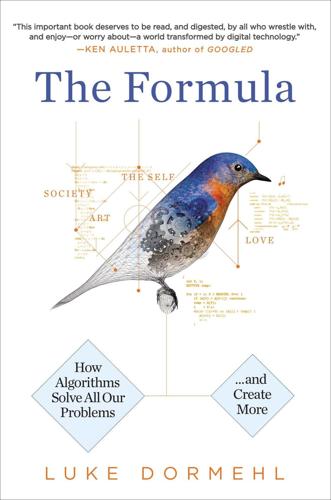
The Formula: How Algorithms Solve All Our Problems-And Create More
by
Luke Dormehl
Published 4 Nov 2014
(Indianapolis: Bobbs-Merrill, 1965). 45 Coughlan, Alexandra. “Reviewed: Sensing Memory Festival at the University of Plymouth.” New Statesman, February 21, 2013. newstatesman.com/culture/music-and-performance/2013/02/aural-pill-popping. 46 Morozov, Evgeny. To Save Everything, Click Here: Technology, Solutionism, and the Urge to Fix Problems That Don’t Exist (London: Allen Lane, 2013). 47 Levy, David. Robots Unlimited: Life in a Virtual Age (Wellesley, UK: A. K. Peters, 2006). 48 Adorno, Theodor, and Max Horkheimer. Dialectic of Enlightenment (New York: Herder and Herder, 1972). 49 Bell, Philip.
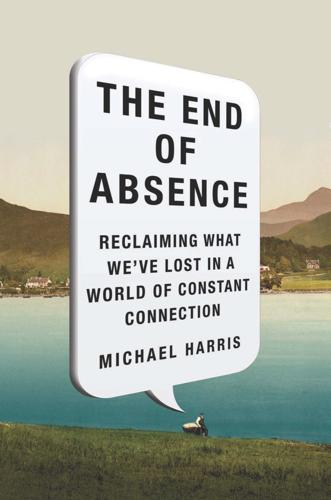
The End of Absence: Reclaiming What We've Lost in a World of Constant Connection
by
Michael Harris
Published 6 Aug 2014
Holt, Grace Chee, and Esther Ng, “Exploring the Consequences of Bullying Victimization in a Sample of Singapore Youth,” International Criminal Justice Review 23, no. 1 (2013): 5–24. 22 percent of students: Ibid. “every possible social and political problem”: Evgeny Morozov, The Net Delusion: The Dark Side of Internet Freedom (New York: PublicAffairs, 2011), 312. “regardless of what you are looking at”: Evgeny Morozov, To Save Everything, Click Here: The Folly of Technological Solutionism (New York: PublicAffairs, 2013), 357. “We bend to the inanimate”: Sherry Turkle, Alone Together: Why We Expect More from Technology and Less from Each Other (New York: Basic Books, 2012), xii. “There are things, which you cannot tell your friends”: Ibid., 51. “Extremely short exposures”: Joseph Weizenbaum, Computer Power and Human Reason: From Judgment to Calculation (New York: W.

The New Nomads: How the Migration Revolution Is Making the World a Better Place
by
Felix Marquardt
Published 7 Jul 2021
Monbiot, G. Heat. Penguin (2007). Monbiot, G. Out of the Wreckage. Verso (2017). Montaigne, M. de. The Journal of Montaigne’s Travels in Italy: In Italy by Way of Switzerland and Germany. Translated by William George Waters. BiblioLife (2009). Morozov, E. To Save Everything, Click Here: Technology, Solutionism and the Urge to Fix Problems That Don’t Exist. Allen Lane (2013). Morozov, E. The Net Delusion: How Not to Liberate the World. Penguin (2011). Murakami, H. 1Q84. Translated by Jay Rubin and Philip Gabriel. Harvill Secker (2012). Murakami, H. Kafka on the Shore. Translated by Philip Gabriel.
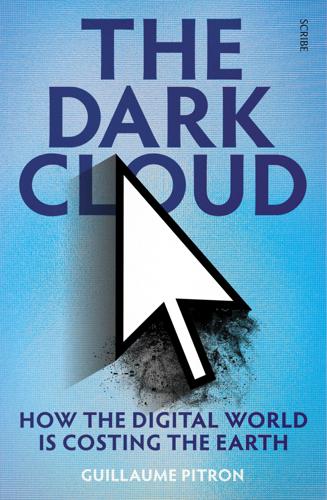
The Dark Cloud: How the Digital World Is Costing the Earth
by
Guillaume Pitron
Published 14 Jun 2023
CHAPTER NINE Twenty thousand tentacles under the sea NEITHER TECHNICAL LIMITATIONS NOR PHYSICAL BOUNDARIES TODAY seem able to impede our quest for virtuality. The production of data may well explode; armies of engineers will retaliate with astonishing innovations. The most arresting illustration of this technological ‘solutionism’ is in a comment made popular by Al Gore in 1993: ‘Well today, commerce rolls not just on asphalt highways, but along information highways’, declared the US vice-president in an address that would go down in history.1 And it was no metaphor; for decades, humans have been building physical routes to consolidate the internet’s architecture and to support its formidable expansion so that more and more data can be exchanged at ever-increasing speeds.

The Glass Cage: Automation and Us
by
Nicholas Carr
Published 28 Sep 2014
Licklider, “Man-Computer Symbiosis,” IRE Transactions on Human Factors in Electronics 1 (March 1960): 4–11. 26.Langdon Winner, Autonomous Technology: Technics-out-of-Control as a Theme in Political Thought (Cambridge, Mass.: MIT Press, 1977), 20–21. 27.Aristotle, The Politics, in Mitchell Cohen and Nicole Fermon, eds., Princeton Readings in Political Thought (Princeton: Princeton University Press, 1996), 110–111. 28.Evgeny Morozov, To Save Everything, Click Here: The Folly of Technological Solutionism (New York: PublicAffairs, 2013), 323. 29.Kevin Kelly, “Better than Human: Why Robots Will—and Must—Take Our Jobs,” Wired, January 2013. 30.Kevin Drum, “Welcome, Robot Overloads. Please Don’t Fire Us?,” Mother Jones, May/June 2013. 31.Karl Marx and Frederick Engels, The Communist Manifesto (New York: Verso, 1998), 43. 32.Anonymous, “Slaves to the Smartphone,” Economist, March 10, 2012. 33.Kevin Kelly, “What Technology Wants,” Cool Tools, October 18, 2010, kk.org/cooltools/archives/4749. 34.George Packer, “No Death, No Taxes,” New Yorker, November 28, 2011. 35.Hannah Arendt, The Human Condition (Chicago: University of Chicago Press, 1998), 4–5. 36.Mihaly Csikszentmihalyi, Flow: The Psychology of Optimal Experience (New York: Harper, 1991), 80. 37.Ralph Waldo Emerson, “The American Scholar,” in Essays and Lectures (New York: Library of America, 1983), 57.
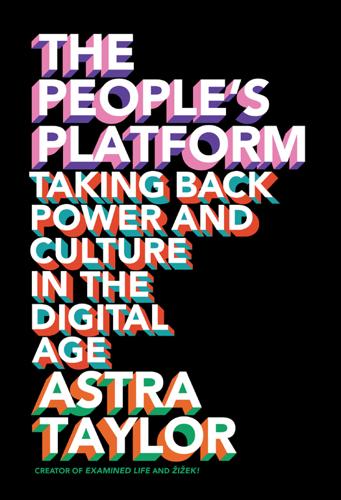
The People's Platform: Taking Back Power and Culture in the Digital Age
by
Astra Taylor
Published 4 Mar 2014
(New York: Simon & Schuster, 2013); Kate Losse’s The Boy Kings: A Journey into the Heart of the Social Network (New York: Free Press, 2012); Evgeny Morozov’s The Net Delusion: The Dark Side of Internet Freedom (New York: PublicAffairs, 2011) and To Save Everything Click Here: The Folly of Technological Solutionism (New York: PublicAffairs, 2013); Eli Pariser’s The Filter Bubble: What the Internet Is Hiding from You (New York: Penguin Press, 2011); Robert McChesney’s Digital Disconnect: How Capitalism Is Turning the Internet Against Democracy (New York: The New Press, 2013); and Siva Vaidhyanathan’s The Googlization of Everything: (And Why We Should Worry) (Berkeley: University of California Press, 2011). 3.

The Digital Party: Political Organisation and Online Democracy
by
Paolo Gerbaudo
Published 19 Jul 2018
Moreno, ‘Banks’ new competitors: Starbucks, Google, and Alibaba’, Harvard Business Review 2 (2014): 1–3. 96. Swedish Pirate Party Declaration of Principles, 4.0 version, May 2012, retrieved from https://en.wikisource.org/wiki/Pirate_Party_Declaration_of_Principles/4.0. 97. Evgeny Morozov, To save everything, click here: the folly of technological solutionism (New York: PublicAffairs, 2013). 98. Richard Florida, The great reset: how new ways of living and working drive post-crash prosperity (Toronto: Random House Canada, 2010). 99. Schumpeter, Capitalism, socialism and democracy, pp.81–83. 100. Clayton M. Christensen, ‘The ongoing process of building a theory of disruption’, Journal of Product Innovation Management 23, no.1 (2006): 39–55. 101.
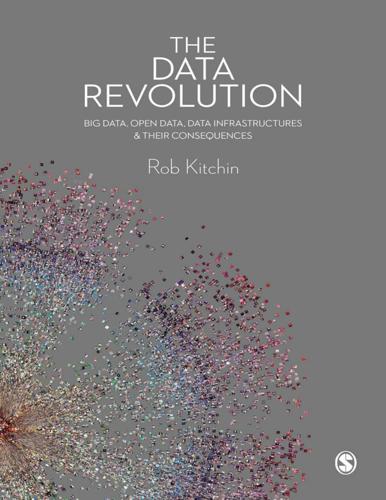
The Data Revolution: Big Data, Open Data, Data Infrastructures and Their Consequences
by
Rob Kitchin
Published 25 Aug 2014
Moore, G.E. (1965) ‘Cramming more components onto integrated circuits’, Electronics, 38(8), http://download.intel.com/museum/Moores_Law/ArticlesPress_Releases/Gordon_Moore_1965_Article.pdf (last accessed 20 May 2013). Moretti, F. (2005) Graphs, Maps, Trees: Abstract Models for a Literary History. Verso, London. Morozov, E. (2013) To Save Everything, Click Here: Technology, Solutionism, and the Urge to Fix Problems That Don’t Exist. Allen Lane, New York. Morton, F. (2005) ‘Performing ethnography: Irish traditional music sessions and new methodological spaces’, Social and Cultural Geography, 6: 661–76. Najmi (2004) ‘Generations of computer’, Techi/Warehouse, 13 August, http://www.techiwarehouse.com/engine/a046ee08/Generations-of-Computer (last accessed 20 May 2013).

The Impulse Society: America in the Age of Instant Gratification
by
Paul Roberts
Published 1 Sep 2014
McCloskey, Deirdre. The Bourgeois Virtues: Ethics for an Age of Commerce. Chicago: University of Chicago Press, 2006. Mokyr, Joel. The Lever of Riches: Technological Creativity and Economic Progress. New York: Oxford University Press, 1992. Morozov, Evgeny. To Save Everything, Click Here: The Folly of Technological Solutionism. New York: Public Affairs, 2013. Noah, Timothy. The Great Divergence: America’s Growing Inequality Crisis and What We Can Do about It. New York: Bloomsbury, 2012. Nordhaus, Ted, and Michael Shellenberger, Break Through: From the Death of Environmentalism to the Politics of Possibility.

No Such Thing as a Free Gift: The Gates Foundation and the Price of Philanthropy
by
Linsey McGoey
Published 14 Apr 2015
Ebenstein, Friedrich Hayek: A Biography (Chicago: University of Chicago Press, 2003), 146. 4Alexis de Tocqueville, Democracy in America (New York: Harper & Row, 1966), 295–7. 5Quote from ‘Founder’s Story’, atlasnetwork.org. 6Lee Edwards, ‘Right on the Money’, Philanthropy (Spring 2009). 7Jamie Peck, ‘Remaking Laissez-faire’, Progress in Human Geography, vol. 32, no. 1 (2008), 30. 8Phillips, Wealth and Democracy, xiv. 9Michael Oakeshott, Rationalism in Politics and Other Essays (Indianapolis, IN: Liberty Fund, 1991), 26. 10James Scott, Seeing Like a State: How Certain Schemes to Improve the Human Condition Have Failed (Princeton, NJ: Princeton University Press, 1998), 4; the relevance of Scott’s work to large-scale donors today is also discussed by Timothy Ogden. See Timothy Ogden, ‘Living with the Gates Foundation: How Much Difference Is it Making?’, Alliance 16 (2011), 29–45. 11Evgeny Morozov, To Save Everything, Click Here: The Folly of Technological Solutionism (London: Allen Lane, 2013) 12Rich, “‘No Child” Law Whittled Down by White House’. 13Edwards, Small Change, 25. 14Morozov, To Save Everything, Click Here, 133. 15Peter Thiel, ‘The Education of a Libertarian’, Cato Unbound, 13 April 2009. 16See Morozov, To Save Everything, Click Here. 17Quoted in Eichenwald, ‘Microsoft’s Lost Decade’. 18Tressell’s biographer, F.C.

What Algorithms Want: Imagination in the Age of Computing
by
Ed Finn
Published 10 Mar 2017
Mnih, Volodymyr, Koray Kavukcuoglu, David Silver, Andrei A. Rusu, Joel Veness, Marc G. Bellemare, Alex Graves, et al. “Human-Level Control through Deep Reinforcement Learning.” Nature 518 (7540) (February 26, 2015): 529–533. doi:10.1038/nature14236. Morozov, Evgeny. To Save Everything, Click Here: The Folly of Technological Solutionism. New York: PublicAffairs, 2013. Moschovakis, Yiannis N. What Is an Algorithm? In Mathematics Unlimited: 2001 and Beyond, edited by Björn Engquist and Wilfried Schmid, 919–936. Berlin: Springer-Verlag, 2001. Nakamoto, Satoshi. “Bitcoin: A Peer-to-Peer Electronic Cash System.” Accessed July 28, 2014. https://bitcoin.org/bitcoin.pdf.

Data and the City
by
Rob Kitchin,Tracey P. Lauriault,Gavin McArdle
Published 2 Aug 2017
Journal of Regional Science 50(1): 181–201. Mims, C. (2013) ‘Coming soon: the cybercrime of things’, The Atlantic, 6 August, available from: www.theatlantic.com/technology/archive/2013/08/coming-soon-the-cybercrimeof-things/278409/ [accessed 7 August 2013]. Morozov, E. (2013) To Save Everything, Click Here: Technology, Solutionism, and the Urge to Fix Problems That Don’t Exist. New York: Allen Lane. Paganini, P. (2013) ‘Israeli road control system hacked, causes traffic jam on Haifa highway’, The Hacker News, 28 October, available from: http://thehackernews. com/2013/10/israeli-roadcontrol-system-hacked.html [accessed 13 November 2013].

Age of Anger: A History of the Present
by
Pankaj Mishra
Published 26 Jan 2017
Alexander Dru (New York, 1962). Laurence Scott, The Four-Dimensional Human: Ways of Being in the Digital World (London, 2015), is the most interesting among recent books on the reshaping of the human self by digital media. On the new illusions of the age, see Evgeny Morozov, To Save Everything, Click Here: Technology, Solutionism, and the Urge to Fix Problems that Don’t Exist (London, 2013). The new modes of exclusion are described in Saskia Sassen, Expulsions: Brutality and Complexity in the Global Economy (Cambridge, 2014). See also Arjun Appadurai, Fear of Small Numbers: An Essay on the Geography of Anger (Durham, NC, 2006).

A World Without Work: Technology, Automation, and How We Should Respond
by
Daniel Susskind
Published 14 Jan 2020
“The History of Technological Anxiety and the Future of Economic Growth: Is This Time Different?” Journal of Economic Perspectives 29, no. 3 (2015): 31–50. Moravec, Hans. Mind Children. Cambridge, MA: Harvard University Press, 1988. Moretti, Enrico. The New Geography of Jobs. New York: First Mariner Books, 2013. Morozov, Evgeny. To Save Everything, Click Here: Technology, Solutionism, and the Urge to Fix Problems That Don’t Exist. New York: PublicAffairs, 2013. Motta, Massimo. Competition Policy. Cambridge: Cambridge University Press, 2007. Müller, Karsten, and Carlo Schwarz. “Fanning the Flames of Hate: Social Media and Hate Crime.” Warwick University Working Paper Series No. 373 (May 2018).

The Smart Wife: Why Siri, Alexa, and Other Smart Home Devices Need a Feminist Reboot
by
Yolande Strengers
and
Jenny Kennedy
Published 14 Apr 2020
Galen Gruman, “Home Automation Is a Solution in Search of a Problem,” InfoWorld, December 2, 2014, https://www.infoworld.com/article/2853026/internet-of-things/home-automation-is-still-mostly-a-solution-in-search-of-a-problem.html. 21. Evgeny Morozov, To Save Everything, Click Here: The Folly of Technological Solutionism (New York: PublicAffairs, 2013). 22. Meredith Broussard, Artificial Unintelligence: How Computers Misunderstand the World (Cambridge, MA: MIT Press, 2018), 8. 23. Drew Harwell, “Why Whirlpool’s Smart Washing Machine Was a Dumb Idea,” Sydney Morning Herald, November 2, 2014, https://www.smh.com.au/technology/why-whirlpools-smart-washing-machine-was-a-dumb-idea-20141102-11flym.html. 24.

Mood Machine: The Rise of Spotify and the Costs of the Perfect Playlist
by
Liz Pelly
Published 7 Jan 2025
Streaming claimed to solve piracy, but for many independent artists and listeners, the problems of the ultra-capitalist music business were never solved. The truth is that no technological intervention was ever going to easily solve such a complicated and ever-changing question: not piracy, not downloads, not streaming. There are no one-click solutions, and perhaps what music could benefit from most would be a wholesale rejection of technological solutionism. The problems faced by musicians, like those faced elsewhere in society, aren’t technological problems: they’re problems of power and labor. Luckily, the future of music is not something that was unilaterally decided in 2008 when the major labels struck their first deals with Spotify, even though it can often feel that way.
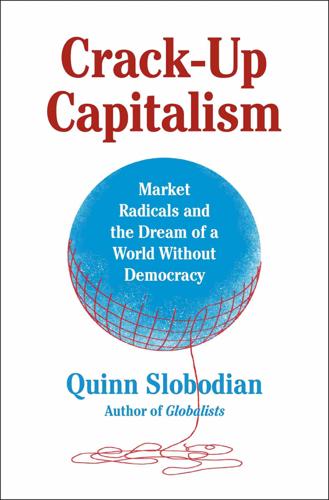
Crack-Up Capitalism: Market Radicals and the Dream of a World Without Democracy
by
Quinn Slobodian
Published 4 Apr 2023
Paul Romer, “A Theory of History, with an Application,” The Long Now Foundation, May 18, 2009, https://longnow.org/seminars/02009/may/18/theory-history-application/. 2. Paul Romer, “Escape from the Great Distress,” Issues in Science and Technology (Fall 2012): 65. 3. Romer, “A Theory of History, with an Application.” 4. See Evgeny Morozov, To Save Everything, Click Here: The Folly of Technological Solutionism (New York: PublicAffairs, 2013). 5. Pauline Lipman, “Obama’s Education Policy: More Markets, More Inequality, New Urban Contestations,” in Urban Policy in the Time of Obama, ed. James DeFilippis (Minneapolis: University of Minnesota Press, 2016), 143. 6. David Wessel, “A Plan to Turn Honduras into the Next Hong Kong,” Wall Street Journal, February 3, 2011, ProQuest. 7.

The Black Box Society: The Secret Algorithms That Control Money and Information
by
Frank Pasquale
Published 17 Nov 2014
Harcourt, The Illusion of Free Markets: Punishment and the Myth of Natural Orders (Cambridge, MA: Harvard University Press, 2012). 54. Cavan Sieczkowski, “SOPA Is Dead: Lamar Smith Withdraws Bill from the House,” International Business Times, January 20, 2012, http://www .ibtimes.com /sopa-dead-lamar-smith-withdraws-bill-house-398552. 55. Evgeny Morozov, To Save Everything, Click Here: The Folly of Technological Solutionism (New York: Public Affairs, 2013). 56. Julie Cohen, Configuring the Networked Self (New Haven, CT: Yale University Press, 2012). 57. Harcourt, The Illusion of Free Markets, 179–180; G. Richard Shell, Make the Rules or Your Rivals Will (Philadelphia: G. Richard Shell Consulting, 2011). 58.

If Mayors Ruled the World: Dysfunctional Nations, Rising Cities
by
Benjamin R. Barber
Published 5 Nov 2013
Anderson proposes a Social Network Constitution as a “touchstone, an expression of fundamental values, that we should use to judge the activities of social networks and their citizens.” 33. Evgeny Morozov, “The Internet Intellectual,” review of Jarvis, New Republic, November 2, 2011. For Mozorov’s wittily skeptical views see his The Net Delusion: The Dark Side of Internet Freedom, New York: Public Affairs Press, 2012; and To Save Everything, Click Here: The Folly of Technological Solutionism, New York: Public Affairs, 2013. 34. Friedman’s preoccupation with globalization and technology can be a welcome riposte to American parochialism and its tendencies to the Luddite; but he is far too often a fan without discretion, as when he writes about the “tightening merger between globalization and the latest information technology revolution.”

Fancy Bear Goes Phishing: The Dark History of the Information Age, in Five Extraordinary Hacks
by
Scott J. Shapiro
yes or no: Partial Transcript of Imposition, 18. “I want to thank the FBI”: Partial Transcript of Imposition, 19. “picked a better role model”: Partial Transcript of Imposition, 21. Conclusion: The Death of Solutionism Evgeny Morozov: Evgeny Morozov, To Save Everything, Click Here: The Folly of Technological Solutionism (Washington, DC: PublicAffairs, 2013). “Africa? There’s an App”: “Africa? There’s an App for That,” Wired, August 7, 2012, https://web.archive.org/web/20120807145838/https://www.wired. co.uk/news/archive/2012-08/07/africa-app-store-apple. Solutionism is ubiquitous in cybersecurity: Solutionism is pervasive in academic research as well, in large part because cybersecurity is usually studied and taught in computer-science departments.